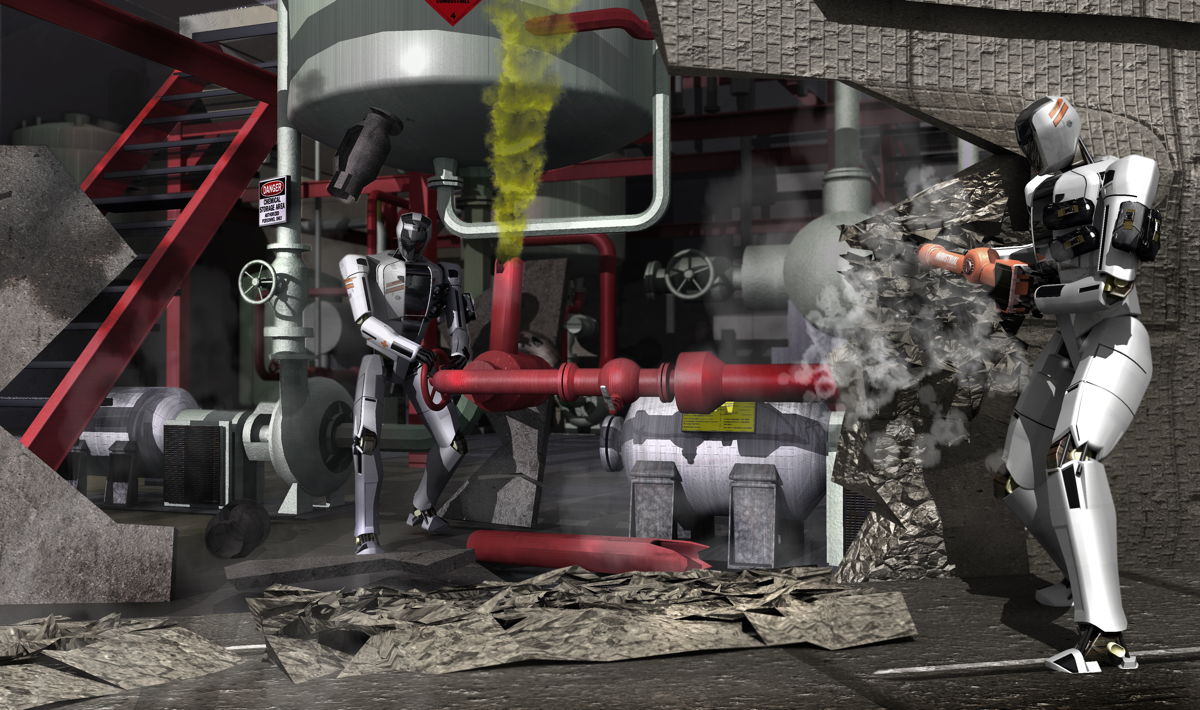Two NASA Droids Set for Military Robotics Challenge

Two NASA-built robots — one of them ape-inspired — have been selected to compete against other droids in a grueling challenge later this year.
The United States military has been envisioning a future in which robots could replace humans as responders in disaster zones. The Defense Advanced Research Projects Agency, or DARPA, is trying to push that prospect closer to reality through its Robotics Challenge.
In December, DARPA will hold the first physical trials of the competition at the Homestead-Miami Speedway in Florida, where teams will have to navigate their high-tech robots through a rigorous obstacle course. According to some of the task descriptions released by DARPA last week, the robots will drive around roadblocks, bound over rugged terrain, climb up ladders, break down walls and connect a fire hose to a valve. [Teams Prep for DARPA Robot Challenge (Video)]
Six custom robots are headed for the trials, including one built at NASA's Jet Propulsion Laboratory (JPL) in Pasadena, Calif., called RoboSimian, which resembles a monkey and gets around on all fours. Another robot dubbed Valkyrie, made at NASA's Johnson Space Center in Houston, has been tapped for the physical test as well, according to DARPA.
Seven more teams — including a group from JPL and the University of California, Santa Barbara (UCSB) — are being given use of Boston Dynamics' humanoid Atlas robot to compete in the trials.
"Atlas is one of the most advanced humanoid robots ever built, but is essentially a physical shell for the software brains and nerves that the teams will continue to develop and refine," DARPA officials wrote in a press release last week.
The seven teams won the chance to use Atlas — which stands more than 6 feet (1.8 meters) tall and weighs 330 pounds (150 kilograms) — by passing DARPA's Virtual Robotics Challenge in June. In that simulated competition, teams had to navigate a virtual Atlas robot through the obstacles of a video game-like setting.
Get the Space.com Newsletter
Breaking space news, the latest updates on rocket launches, skywatching events and more!
As video of the JPL/UCSB strategy shows, some groups devised rather creative ways of getting around, like crab-walking, to avoid falling in the virtual environment.
"The Virtual Robotics Challenge was a proving ground for teams' ability to create software to control a robot in a hypothetical scenario," Gill Pratt, program manager for the challenge, said in a statement. Pratt added that the tasks were quite accurate representations of real-world causes and effects, "but the experience wasn't quite the same as handling an actual, physical robot."
"Now these seven teams will see if their simulation-honed algorithms can run a real machine in real environments," Pratt said. "And we expect all teams will be further refining their algorithms, using both simulation and experimentation."
The DARPA Robotics Challenge will take place Dec. 20-21.
Follow us @Spacedotcom, Facebook or Google+. Originally published on SPACE.com.
Join our Space Forums to keep talking space on the latest missions, night sky and more! And if you have a news tip, correction or comment, let us know at: community@space.com.

Megan has been writing for Live Science and Space.com since 2012. Her interests range from archaeology to space exploration, and she has a bachelor's degree in English and art history from New York University. Megan spent two years as a reporter on the national desk at NewsCore. She has watched dinosaur auctions, witnessed rocket launches, licked ancient pottery sherds in Cyprus and flown in zero gravity on a Zero Gravity Corp. to follow students sparking weightless fires for science. Follow her on Twitter for her latest project.









